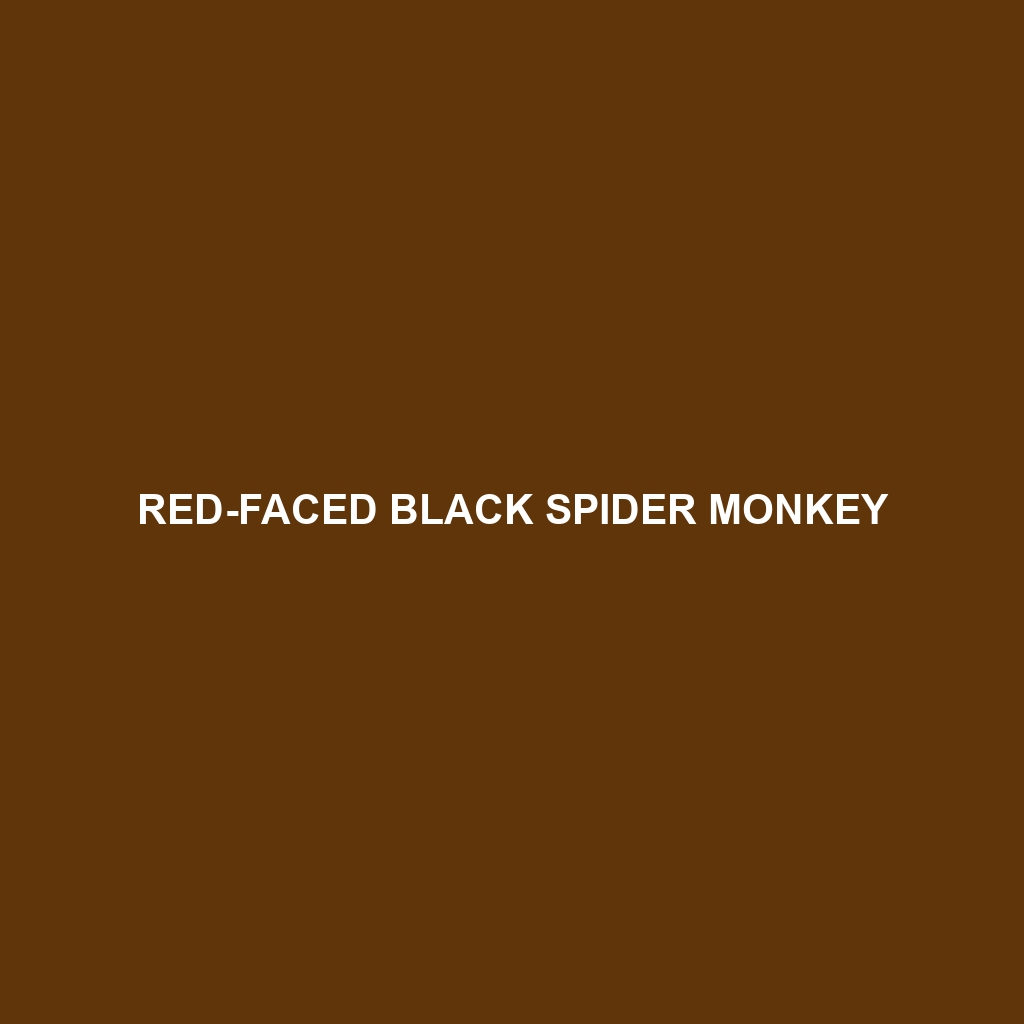Red-faced Black Spider Monkey: A Detailed Description
The Red-faced Black Spider Monkey (Ateles paniscus) is a striking primate native to the tropical rainforests of South America. Known for its distinctive red face and agile, spider-like limbs, this species is highly adapted to an arboreal lifestyle. With its remarkable dexterity and social behaviors, the Red-faced Black Spider Monkey plays a significant role in forest ecology and biodiversity.
Physical Characteristics
Size: Adult Red-faced Black Spider Monkeys typically weigh between 15 to 19 pounds (7 to 9 kilograms), with males generally being larger than females. They measure around 16 to 24 inches (40 to 60 centimeters) in body length, excluding their prehensile tail, which can add another 20 to 32 inches (50 to 80 centimeters).
Coloration: As their name suggests, these primates have a distinctive red face that contrasts sharply with their black fur. The fur is dense and silky, providing insulation and protection in their humid, forested habitats.
Special Features: One of the most remarkable features of the Red-faced Black Spider Monkey is its highly prehensile tail, which acts as a fifth limb. This tail is muscular and flexible, allowing the monkey to grasp branches securely and swing through the forest canopy with ease.
Behaviors
Social Interactions: Red-faced Black Spider Monkeys are highly social animals that live in loose, fission-fusion groups. These groups can range from a few individuals to over 30 members, often splitting into smaller sub-groups to forage during the day and regrouping at night.
Feeding Habits: Their diet is primarily frugivorous, consisting mainly of fruits, but they also consume leaves, flowers, and occasionally insects. They play a crucial role in seed dispersal, contributing to the health and regeneration of their forest habitats.
Ecological Roles: As seed dispersers, they help to maintain the diversity and structure of tropical rainforest ecosystems. Their foraging activities also create pathways and open spaces in the dense forest, allowing sunlight to reach the forest floor and promoting the growth of a variety of plant species.
Habitats
Range: The Red-faced Black Spider Monkey is found in the tropical rainforests of northern South America, including Brazil, Guyana, Suriname, French Guiana, and Venezuela.
Environment: They prefer undisturbed, mature forests with a dense canopy. These areas provide the necessary resources for their diet and the complex arboreal pathways needed for their locomotion.
Adaptations
Arboreal Adaptations: Their long limbs and prehensile tail are perfectly adapted to an arboreal lifestyle. These adaptations allow them to move swiftly and efficiently through the forest canopy, avoiding ground predators and accessing food resources high in the trees.
Dietary Adaptations: Their specialized dentition and digestive system are adapted to process a fruit-heavy diet, allowing them to extract maximum nutrition from their preferred food sources.
Conservation Status
The Red-faced Black Spider Monkey is currently listed as Vulnerable by the International Union for Conservation of Nature (IUCN). They face significant threats from habitat destruction due to logging, agriculture, and human encroachment, as well as hunting pressures in some regions. Conservation efforts are critical to ensuring their survival, involving habitat protection, anti-poaching measures, and environmental education.
Fun Facts
Highly Intelligent: These monkeys exhibit high levels of intelligence and problem-solving skills, often using tools and manipulating their environment to access food.
Communication: They use a variety of vocalizations, facial expressions, and body postures to communicate with each other, showcasing their complex social dynamics.
Long Lifespan: In the wild, Red-faced Black Spider Monkeys can live up to 27 years, and even longer in captivity, reflecting their adaptability and resilience when provided with a safe environment.
By appreciating the unique attributes and ecological importance of the Red-faced Black Spider Monkey, we can better understand the need to protect and conserve these fascinating creatures and their habitats.
